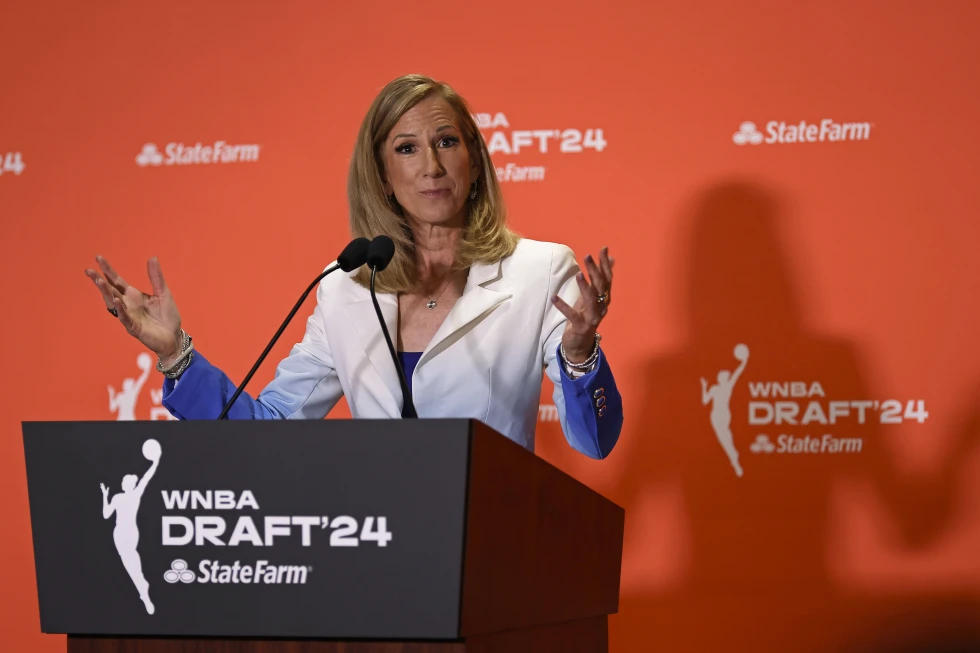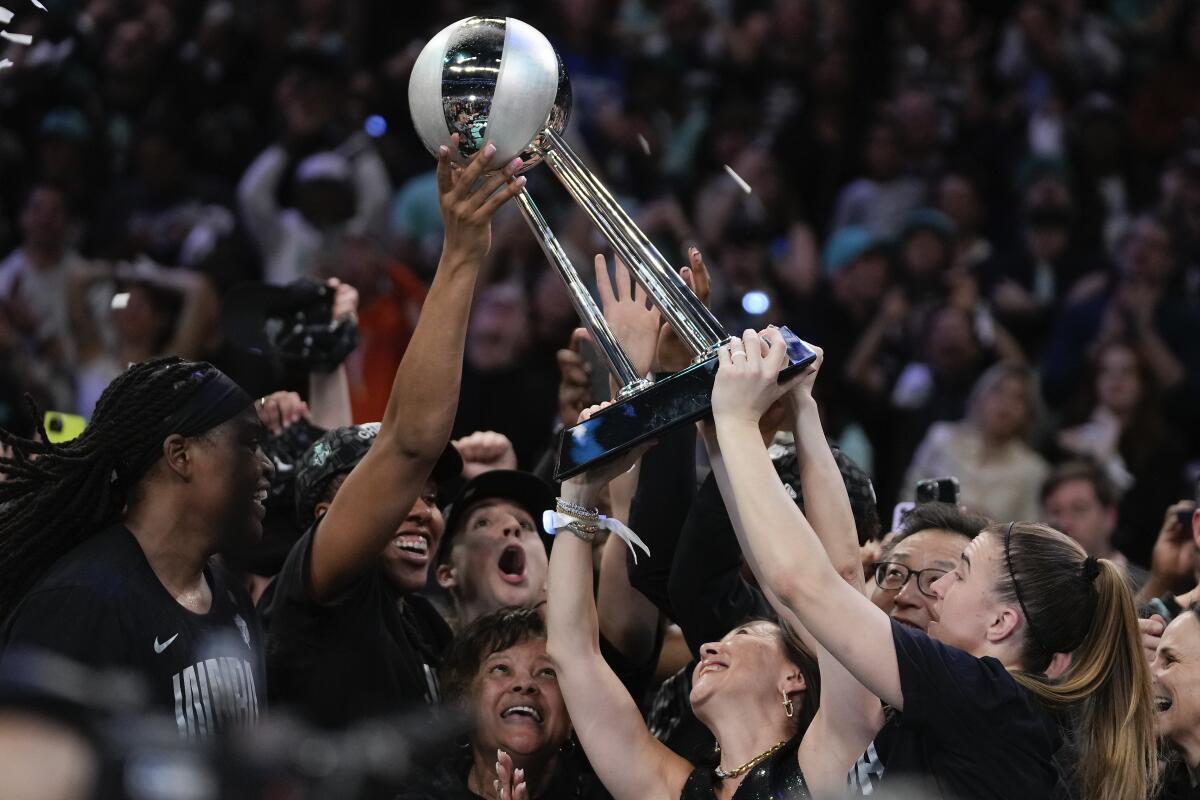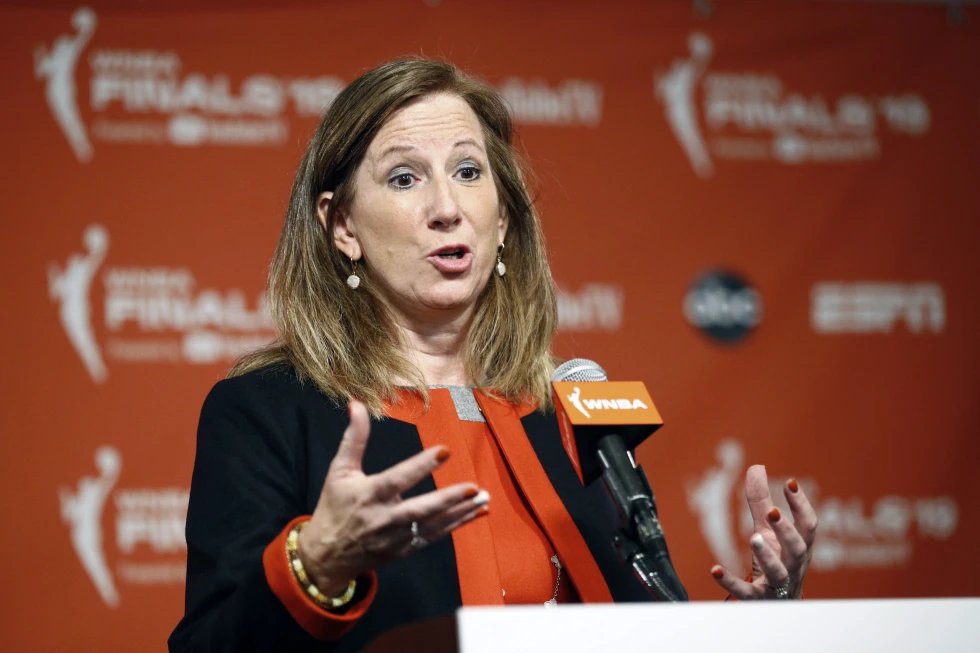The WNBA is in a good position as it moves into the offseason after a successful year with record viewership, attendance, and a first-time champion in New York.
Right after the celebration ended at Barclays Center following Game 5 of the WNBA Finals, the league and its players began to focus on 2025.
Less than a day after Sunday night’s game and just before the Liberty’s championship parade on Thursday, the players’ union decided to opt out of the current collective bargaining agreement. This choice was expected due to a new 11-year media rights deal worth around $200 million per year starting in 2026. The players want a larger share of the revenue, along with improvements in pensions and salaries.
The current agreement will still be in effect for next season, but both sides hope to reach a new deal quickly.
While negotiations can be tough, there’s a lot to be excited about for those involved with the WNBA.

The league is expanding and plans to increase the number of regular season games to 44. An expansion draft for Golden State will take place in December, with the Valkyries becoming the league’s 13th team. New franchises are also set to join in Toronto and Portland in 2026, with at least one more team starting in either 2027 or 2028.
Although the WNBA could lose one of its star players if Diana Taurasi decides to retire, league officials are looking forward to an exciting draft ahead. The draft lottery is happening next month, which will decide who gets the first pick and possibly select Paige Bueckers, who could follow in Taurasi’s footsteps as the next UConn guard chosen first overall.
Many of the top players in the league will stay in the U.S. this winter to participate in Unrivaled, a 3-on-3 league created by WNBA Finals stars Breanna Stewart and Napheesa Collier.
The championship matchup between Stewart and Collier led to impressive ratings, with all five games attracting over a million viewers. The final Game 5 had an average of 2.2 million viewers, reaching a peak of 3.3 million, making it the most-watched WNBA game in 25 years.
The league experienced its highest regular season viewership in 24 years and its best attendance in 22 years. During the 40-game regular season, 22 broadcasts exceeded a million viewers across various networks.
The rookie class, highlighted by Caitlin Clark and Angel Reese, played a significant role in this success, and they are expected to return even stronger next year.
“When Caitlin Clark announced she was going to enter the draft, I remember … the wave of enthusiasm that came from a player that wasn’t even going to play for the Lynx,” said Minnesota coach Cheryl Reeve.
“So there was a lot of excitement and momentum for the WNBA. But to see it actually translate business-wise across the league, whatever the reasons were. There’s one really big reason and a lot of other little reasons why. And I think the movement that we’re in now is exciting.”

However, not everything has been positive regarding the league’s growth.
Almost half of the WNBA teams have changed coaches in the last month. Atlanta, Chicago, Dallas, Los Angeles, and Washington are all searching for new head coaches. The coaches who were let go had been with their teams for three years or less.
Off the court, players have reported facing more online racial and homophobic threats, including one directed at Stewart and her wife during the WNBA Finals.
Commissioner Cathy Engelbert spoke about the increase in abusive comments players receive on social media during her state of the league address before the WNBA Finals. She mentioned that the league will collaborate with the players’ union to find ways to tackle this issue.
The online harassment and the collective bargaining agreement are two key offseason challenges for the WNBA and its players, but they have a strong foundation to build upon since the league began.
